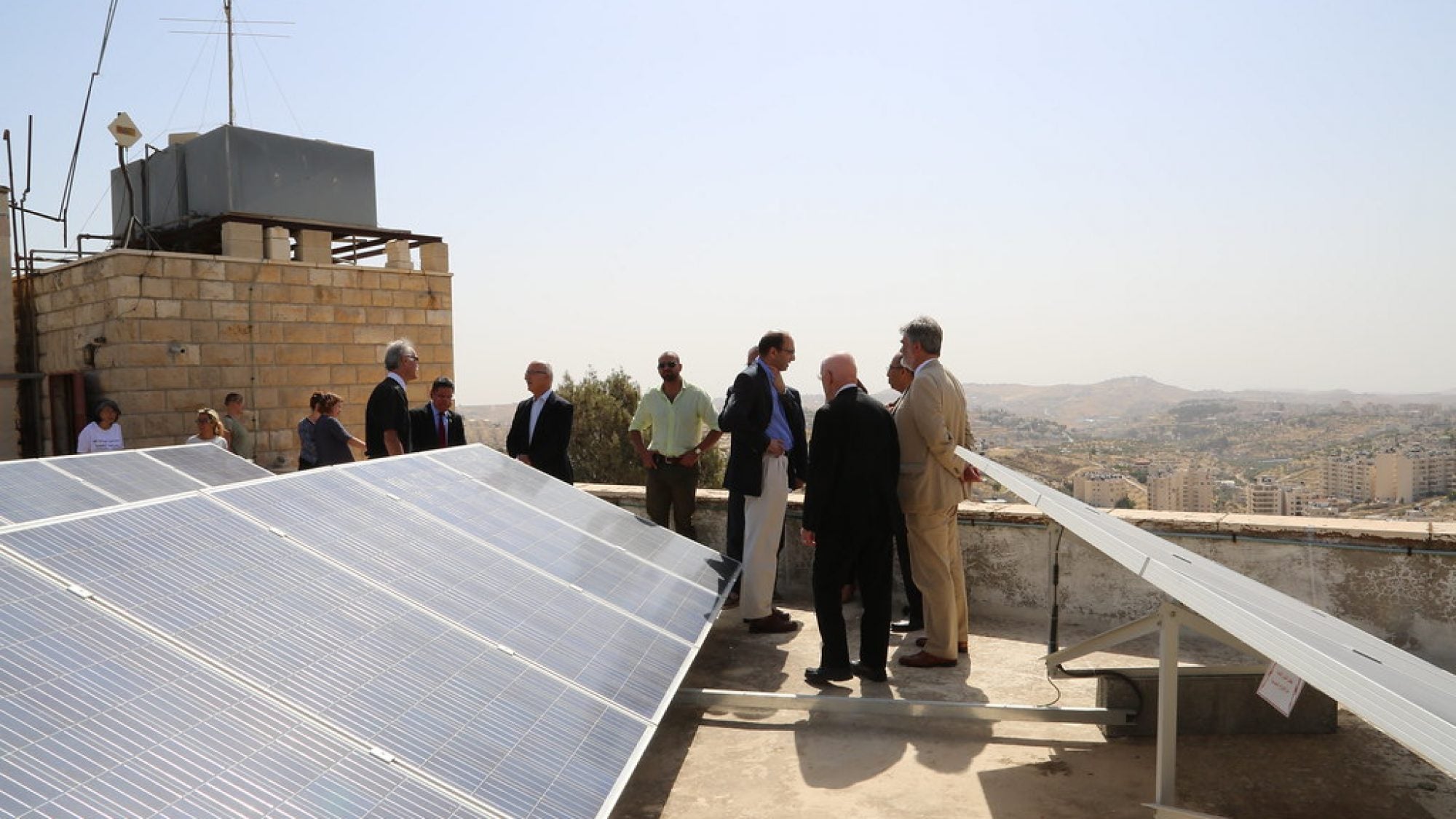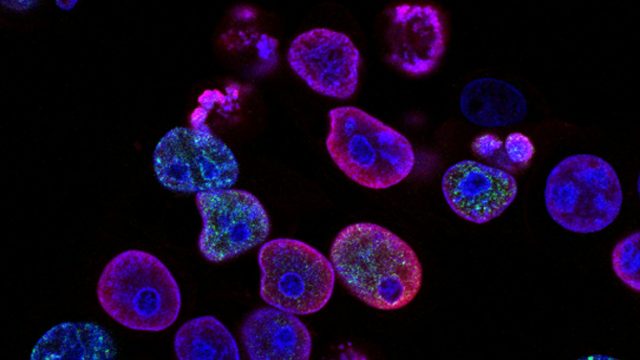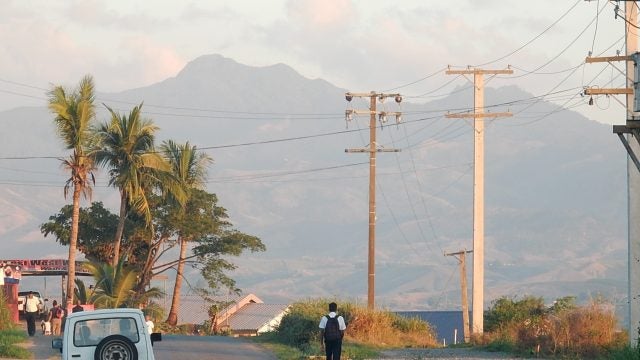
Title: PART I: Energy Infrastructure and the Epistemological Pillars of Peace
The below article is the first installment in a two-part series.
Policies for energy service delivery have for too long been governed by a restrictive sense of the energy system—one that isolates energy from the broader socio-political and diplomatic environments in which they evolve. The energy needs of Israel and the Palestinian Territories and their quest for cleaner, more resilient energy systems offer an opportunity to redefine the way we think about energy systems. Solutions, in turn, help highlight the multiple domestic and foreign policy benefits of a low carbon energy system.
A Bigger Problem
Dwight Eisenhower reportedly said, “Whenever I run into a problem I can’t solve, I make it bigger.” With this in mind, it may be the case that the conventional approach to Middle East peace has unduly constricted its conceptual space. More specifically, the diplomatic framing of the last several decades has focused on a shallow characterization of what constitutes the appropriate knowledge of the realization of peace. Hence, the need to review the epistemological nature of peace and rethink the pathways to peace is urgent.
This article uses an energy and water lens to examine internal Palestinian discourse on democratic culture and to demonstrate energy and water’s essential roles in diplomatic deliberations with Israel and other neighbors. According to the World Bank, a modern Palestinian Authority (PA) energy system will likely remain connected technically and politically with the Israeli energy system. Indeed, this interdependency may serve as foundational to the peace process. “Making the problem bigger” by expanding both the spatial and sectoral dimensions of the challenge can lead to an unconventional pathway toward peace. First, a more expansionary approach to energy infrastructure that includes a diversified portfolio is needed, which must be designed in close coordination with water infrastructure. Second, the conjoined energy and water system needs to be designed for the broader geographical Levantine space including Jordan, Lebanon, and Syria. We thus make the peace problem bigger by including necessary infrastructural systems of water and energy.
Agreement
In September 2016, the Israeli government and the PA signed a historic electricity agreement that gave the PA responsibility over the transmission and distribution of electricity throughout the West Bank. This agreement is important on two levels. First, it presented the leadership of the PA the opportunity to establish a new, modern, and cost-effective energy system that will provide energy services essential for Palestinian economic development. Second, the responsibility for designing and managing its own power system is an opportunity to strengthen its governance structure well beyond the energy sector. Thus, the Electricity Agreement presents the opportunity for the PA to signal to their citizenry, to the Israelis, and to the international community that it possesses the talent and political will to govern responsibly. This opportunity is critical not only for the internal political and economic development of the Palestinian people, but also for the peace process with Israel.
In order to maximize this opportunity, the PA must reorient energy sector reform to sow the seeds of governance autonomy in richer epistemological soil. This simply means that the PA, and the rest of the community of nations in support of this pursuit, must understand the variegated nature of the Palestinian theme of “sumud,” that its “steadfastness” must be rooted in an enlarged vision of community. The PA must think more expansively, redefine the terms of energy discourse, and recognize that an energy system includes more than the fuel source and physical infrastructure. In doing so, the PA can acknowledge how energy service provision affects the public square and can deepen the role of its citizens.
An energy system is a socio-technical artifact that is as much about the institutional and socio-political scaffolding as it is about the technical edifice that scaffolding supports. The PA should welcome the opportunity to construct the various components of a democratic, responsive, and deliberative civic architecture as it builds its physical infrastructure. A vigorous civic infrastructure built on the cultivation of trust and the accumulation of social capital will add needed legitimacy to the governance structure of the PA and its local authorities. Democratic societies depend on a spirited and engaged civil society populated by intermediate associations of engaged citizens who are vested in the success of the community and are willing to come together to practice politics. The PA’s quest for legitimacy is as dependent on the formation of civil society as it is on the behavior of its Israeli neighbors.
Complex Systems
What is essential for the PA to consider in the design of their energy system is the historic energy transition currently sweeping the globe. Country after country is moving toward a more diversified system with increasing contributions from natural gas, renewable energy, and energy efficiency. This global transformation manifests itself not only in the adoption of new energy technologies, but more importantly new governance models that can accommodate the benefits of energy efficiency and distributed generation while maintaining the benefits of centralized power generation.
What is often neglected is the magnitude of the software and social and institutional structures that not only support the large technological edifice, but more importantly the social, cultural, and political behavioral systems that surround it. Electrical systems create a cascading flow of institutional effects from the economic to the political and environmental.
Implementation of the Electricity Agreement will build on an existing electric infrastructure with legacy components of a traditional central grid system fueled by natural gas. However, for a variety of reasons, ranging from topographical to political, the PA has the opportunity to build an electricity network that blends the strengths of the traditional power system with the distinctive resilience that comes with distributed or decentralized energy generation, primarily fueled by solar and wind technologies. These new distributed energy resources have come to be characterized as “disruptive technologies” as they disrupt existing policy and regulatory structures, economic vested interests, and social habits and consumer behavior. In the Palestinian context, however, they should be viewed in a more constructive fashion, as they can be forces to disrupt the existing conditions of energy poverty, dependency, and lack of self-determination. The new model still is dependent on the rudiments of sound utility management and financial viability. Thus, the PA needs to pay attention to system fundamentals such as cost-reflective tariffs, quality service provision, management, and collection enforcement.
Envisioning a Palestinian energy system that incorporates the elements of smart technologies and digitalized networked processes may to some be a step too far in terms of extant institutional and technical capacities. Nevertheless, it is a step that should be seriously considered, and even if progress is incremental, the goal should be a system that speaks to the urgencies of the immediate while facilitating the demands of the future.
. . .
Griffin Thompson is an adjunct professor at Georgetown University, as well as a non-resident fellow at the Payne Institute for Public Policy in the Colorado School of Mines.
Morgan Bazilian is a Professor and Director of the Payne Institute for Public Policy at the Colorado School of Mines. Previously, he was lead energy specialist at the World Bank.
Image Credit: Palestine Museum of Natural History
Recommended Articles

Export controls on AI components have become central tools in great-power technology competition, though their full potential has yet to be realized. To maintain a competitive position in…

The Trump administration should prioritize biotechnology as a strategic asset for the United States using the military strategy framework of “ends, ways, and means” because biotechnology supports critical national objectives…

Fiji, a Pacific Small Island Developing State (PSIDS), faces rural electrification challenges due to its dispersed geography and climate vulnerabilities. With 6 percent of Fijian rural households lacking…